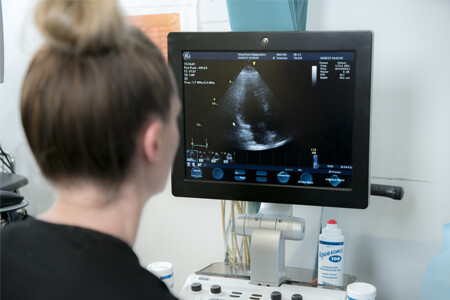Over the years, diagnostic technology has undergone a remarkable evolution, transforming the way diseases are detected and managed. From rudimentary methods to cutting-edge innovations, the journey of diagnostic technology has been nothing short of revolutionary, significantly improving patient outcomes and advancing medical knowledge. Let’s delve into this fascinating evolution and explore some of the key innovations that have shaped modern healthcare.

Early Diagnostic Methods
The history of diagnostic technology traces back to ancient civilisations where medical practitioners relied on primitive techniques such as observation and palpitation to assess a patient’s conditions. As civilisations progressed, so did diagnostic methods. In the early 19th century, the stethoscope revolutionised the diagnosis of cardiovascular and respiratory conditions, marking a significant leap forward in medical diagnosis.
The Birth of Modern Diagnostic Methods
One of the most significant advancements in diagnostic technology came with the discovery of X-rays in 1895. This groundbreaking discovery paved the way for the field of diagnostic imaging, allowing physicians to visualise internal structures of the body non-invasively and accurately diagnose conditions such as fractures, tumours, and cardiovascular diseases. Subsequent decades witnessed the development of various imaging techniques including computed tomography (CT) scans, magnetic resonance imaging (MRI), and ultrasounds, each offering unique insights into different aspects of human anatomy and pathology.
Laboratory Medicine
Similar to advancements in imaging, laboratory diagnostics also underwent a revolution. The introduction of techniques such as blood chemistry analysis, microbiological culture, and histopathology enabled clinicians to delve deeper into understanding the disease processes at a molecular level. The arrival of automated analysers and high-throughput technologies further accelerated the pace of diagnostic testing, allowing for faster and more accurate assessments of patient samples and facilitating in the diagnosis of conditions such as HIV/AIDS and autoimmune disorders.
Molecular Diagnostics
The arrival of molecular biology has transformed diagnostic testing by allowing the detection of diseases at the genetic and molecular levels. Techniques such as polymerase chain reaction (PCR), next-generation sequencing (NGS), and gene expression profiling have revolutionised our ability to diagnose genetic disorders, infectious diseases, and various types of cancer with unprecedented precision. The integration of molecular diagnostics into routine clinical practice has paved the way for targeted therapies, enabling tailored treatment strategies based on individual genetic profiles.
Point-of-Care Testing (POCT)
The demand for rapid and convenient diagnostic solutions has led to the development of POCT devices. These portable and easy-to-use instruments, ranging from blood glucose meters to rapid antigen tests, enable healthcare providers to obtain immediate results at the patient’s bedside or in remote settings. POCT has proven invaluable in emergency medicine, infectious disease management, and chronic disease monitoring, facilitating timely interventions and improving patient outcomes.
The Future of Diagnostic Medicine
Artificial Intelligence (AI)
In recent years, AI has emerged as a game-changer in diagnostic technology. Machine learning algorithms trained on vast datasets can analyse medical images, interpret complex data patterns, and assist clinicians in making more accurate diagnoses. AI-driven diagnostic tools hold immense potential for early disease detection, risk stratification, and treatment optimisation, paving the way for more efficient and personalised healthcare delivery.
Telemedicine and Remote Monitoring
The integration of diagnostic technology with telemedicine platforms has expanded access to healthcare services, especially in underserved areas during public health crises. Remote monitoring devices, wearable sensors, and mobile health apps enable continuous tracking of vital signs, disease progression, and medication adherence, empowering patients to actively participate in their care while minimising the need for in-person visits.
The evolution of diagnostic technology has undoubtedly revolutionised healthcare, empowering clinicians with powerful tools to diagnose accurately, intervene promptly, and improve patient outcomes. As technology continues to advance, we can expect further innovations that will enhance diagnostic capabilities, make healthcare more accessible and personalised, and ultimately contribute to a healthier future for all.
